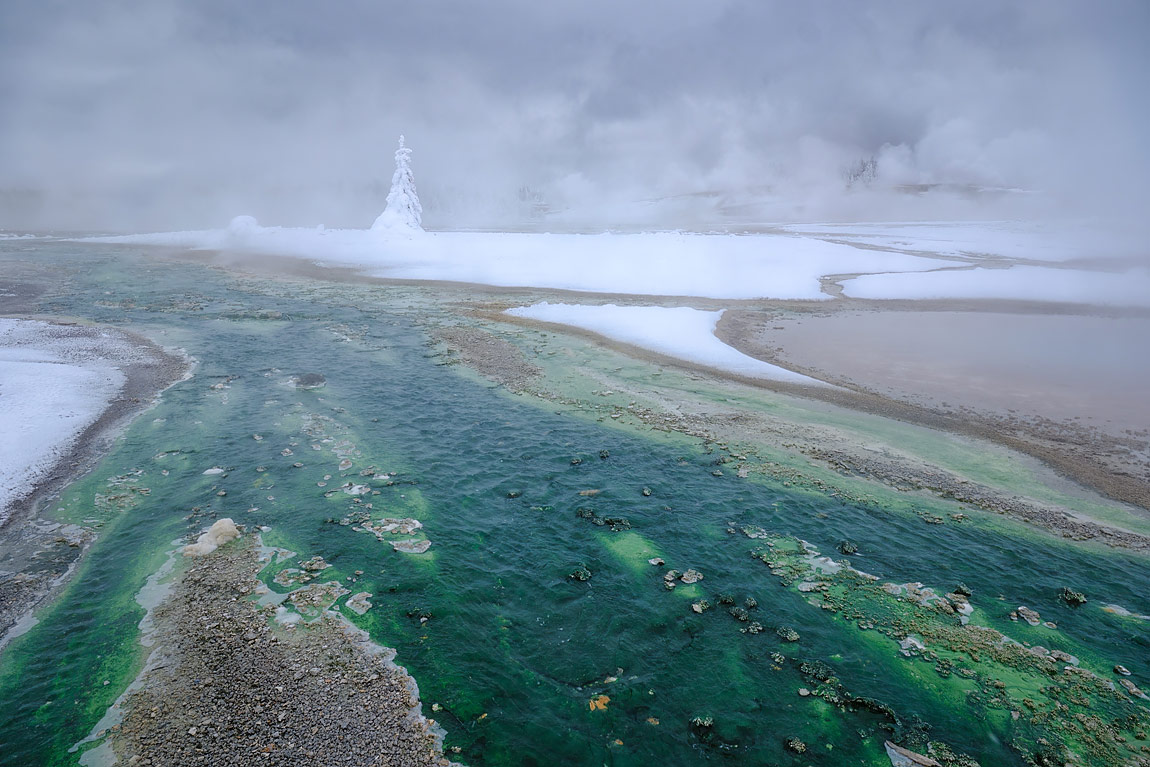Winter in Yellowstone National Park transforms its landscape into a snowy wonderland full of active wildlife, contrast, extra steamy geothermal features, and…no cars. On my week-long park tour last January, I was treated to a landscape enveloped under heavy snowfall and sub-zero temperatures.
The tour emphasized wildlife, but heavier-than-normal snowfall caused elk and other animals to leave the park's elevations for food lower down. So, we shifted our attention to the landscapes that make Yellowstone unique. The location for this image was among them.
Porcelain Basin is part of the larger Norris Basin of geothermal features. Its name comes from the milky color of the mineral deposits found in this basin. Norris Geyser Basin is the hottest and most changeable thermal area in Yellowstone. A raised walkway was placed to allow access to most of the basin's features, including the green overflow channel in the foreground of this image. The green color of the water is a thermophilic bacteria that contains chlorophyll for gathering energy from the sun. This acidic, mineral-rich water comes from the numerous geysers, adding a palette of colors to the area.
This image was taken with my widest lens, as low on the walkway deck as my tripod would allow on the ice-covered, narrow walkway deck. I chose a mid-aperture of this lens to keep the image's margins sharper.
Winter in Yellowstone will not disappoint if a visitor is willing to be flexible with the weather.
As in a previous post, wearing ice tracks on your boots on the raised walkways in Yellowstone is highly recommended.


